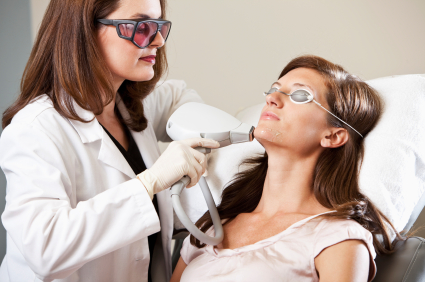Low-Level Laser-Assisted Liposuction:medical fibers
Keywords:medical, fibers, laser, surgical, Time:30-12-2015All the answers have not been resolved but in the near future and with the collaboration of others, liposuction techniques will be developed that have less risk to the patient.

History
The author began using low-level laser-assisted liposuction (LAL), large and small volumes, to liquefy the fat and reduce inflammation and pain as well as to have a better and faster recovery of the patients. Lowlevel laser energy has been used increasingly in the treatment of a broad range of conditions and has improved wound healing, reduced edema, and relieved pain of various etiologies. The medical fibers used for liposuction is an external-beam cold laser, electric diode, with 635-nm wavelength that irradiates adipose tissue at 1.2, 2.4, and 3.6J/cm2 [1–5] at 2, 4, and 6-min exposure in each area. Samples were taken from abdominoplasty tissues treated with a laser and studied by light microscopy, magnetic resonance imaging [6], scanning electron microscopy (SEM), transmission electron microscopy (TEM) [7], physics quantum optics studies, and human cell culture studies [7, 8]. Different biophysical effects were noted in the laser effects on the adipose tissue. After using SEM and TEM, the fat could be seen coming from the inside to outside of the cell [4, 5]. The same effect was noted on treating human cultured cells with a laser. The pores in the adipocyte membrane were noted and an interesting phenomenon with the laser light was seen [7, 8]. It was concluded that the laser light did not destroy the adipocyte but just permitted the mobilization of the fat, keeping the cell membrane in very good condition [7]. This same number of cells could be cultured in vitro. The penetration of laser light, the different effects such as scattering, diffraction, and penetration, and conjugate effects were studied [1–3]. The use of low-level LAL was then tried with the traditional techniques [9]. All of the procedures were performed under local anesthesia assisted by the anesthesiologist [10, 11].
Laser Energy
Many studies have been conducted on the most efficient use of and the most effective application of laser energy, the results of which were dependent on three factors:
1. Coherent light verses non-coherent light
2. Power
3. Wavelength
Coherent Light
Frohlich [12], in 1968, predicted on the basis of quantum physics that the living matrix (i.e., the sets of protein dipoles) must produce coherent or laserlike oscillations if energy is supplied. The coherent radiation field of a medical fibers and the biochemical energy form the surrounding which provides that energy. Frohlich deduced the existence of an acousto-conformational transition, or coherent photons [13, 14], giving a Bose–Einstein condensate [15].
Optimum Wavelength
Research supports 630–640nm as the optimum wavelength [16]. Such coherent vibrations recognize no boundaries at the surface of a cell or organism and they are a collection of cooperative properties of the entire being. As such, they are likely to serve as signals that integrate processes such as growth, repair, defense, and the functioning of the organism as a whole. Research on electrically polarized molecular arrays of biological systems reveals that interactions repeated by the millions of molecules within a cell membrane give rise to huge coherent or Frohlich-like vibrations [16–22]. This singular response shows that the components of a living matrix behave like a coherent molecule radiating and receiving signals. In this way, coherent Frohlich excitations in cytoskeletal microtubules have been suggested to mediate information processing [15–17, 21–23]. Similar mechanisms could be evoked to explain low-level laser therapy (LLLT) effects. Nevertheless, the successful use of LEDs in LLLT in the last few years proves apparently that coherence is not an essential light property for the clinical effects of laser therapy [24–26]. It seems to be more important for light propagation and diffusion, producing speckle patterns from inhomogeneous tissues which leads to local heating [27].
Discussion
Liposuction techniques and coadjuvants have been used for many years. However, each time a new method or procedure appears, there are expectations about its potential benefits. The scientific evidence provided in this chapter suggests that the LAL technique will serve as a valuable contribution to this specific field of medicine and generate the same expectations as other techniques previously described by other authors. Among its benefits are the reduced risk and improved quality of life for patients.
Related Articles
- The clinical observation of semi-conductor laser treatment of hypersensitive dentine
- Study on the Influence of Semiconductor Laser Irradiated Time towards Dental Pulp and Dentin
- APPLICATION OF Nd–YAG LASER TREATMENT FOR ORAL LEUKOPLAKIA
- Clinical treatment applications of dental lasers fibers
- APPLICATION OF Nd–YAG LASER TREATMENT FOR ORAL LEUKOPLAKIA
- The effects among three desensitive tooth methods
- Er-YAG LASER AND DENTAL CARIES TREATMENT
- Disposable bare fiber in oral and facial practice
- Mediastinal emphysema caused by a dental laser
- Interventional laser surgery for oral potentially malignant disorders: a longitudinal patient cohort study
